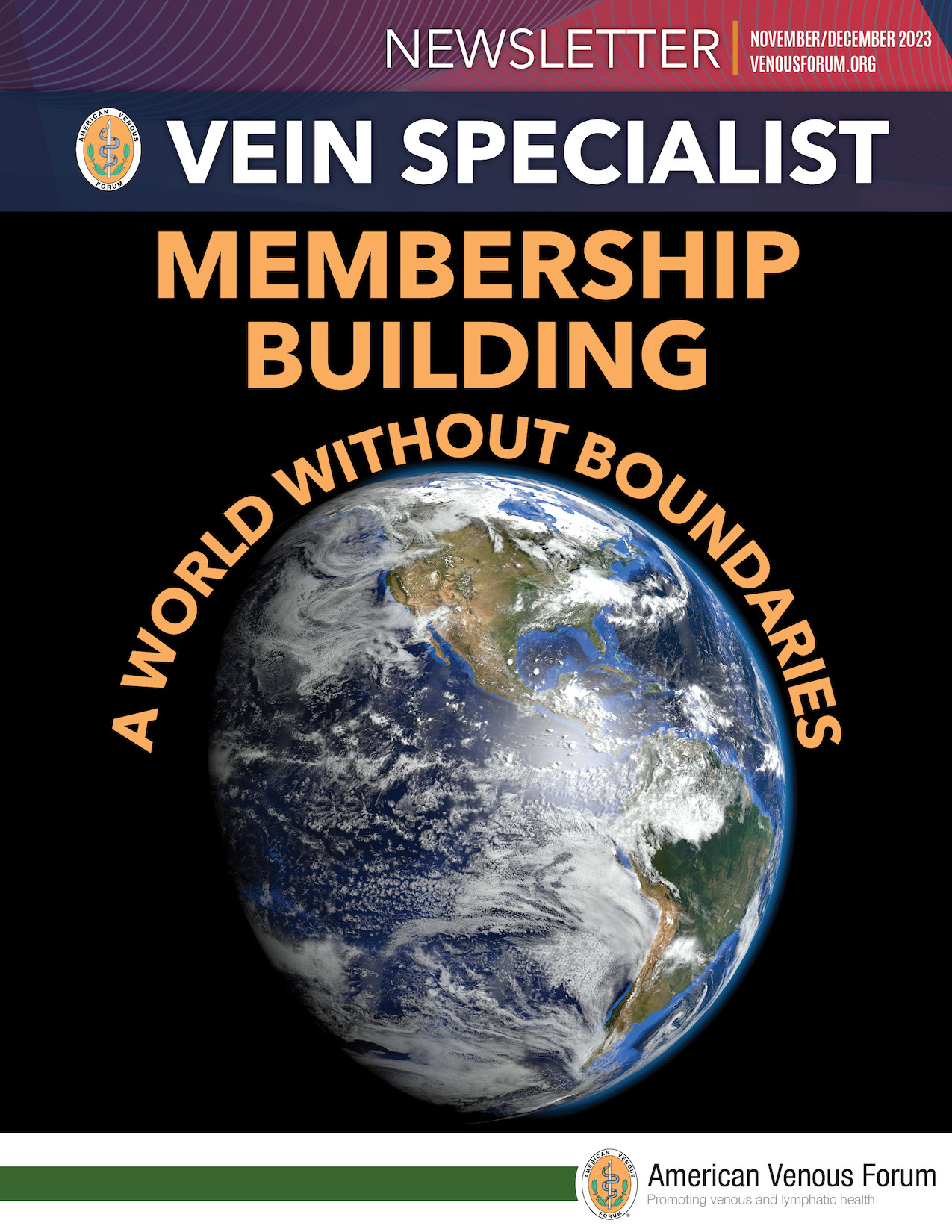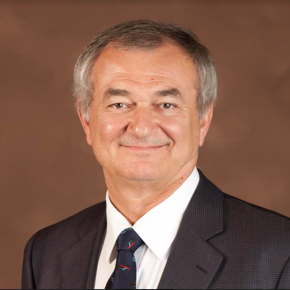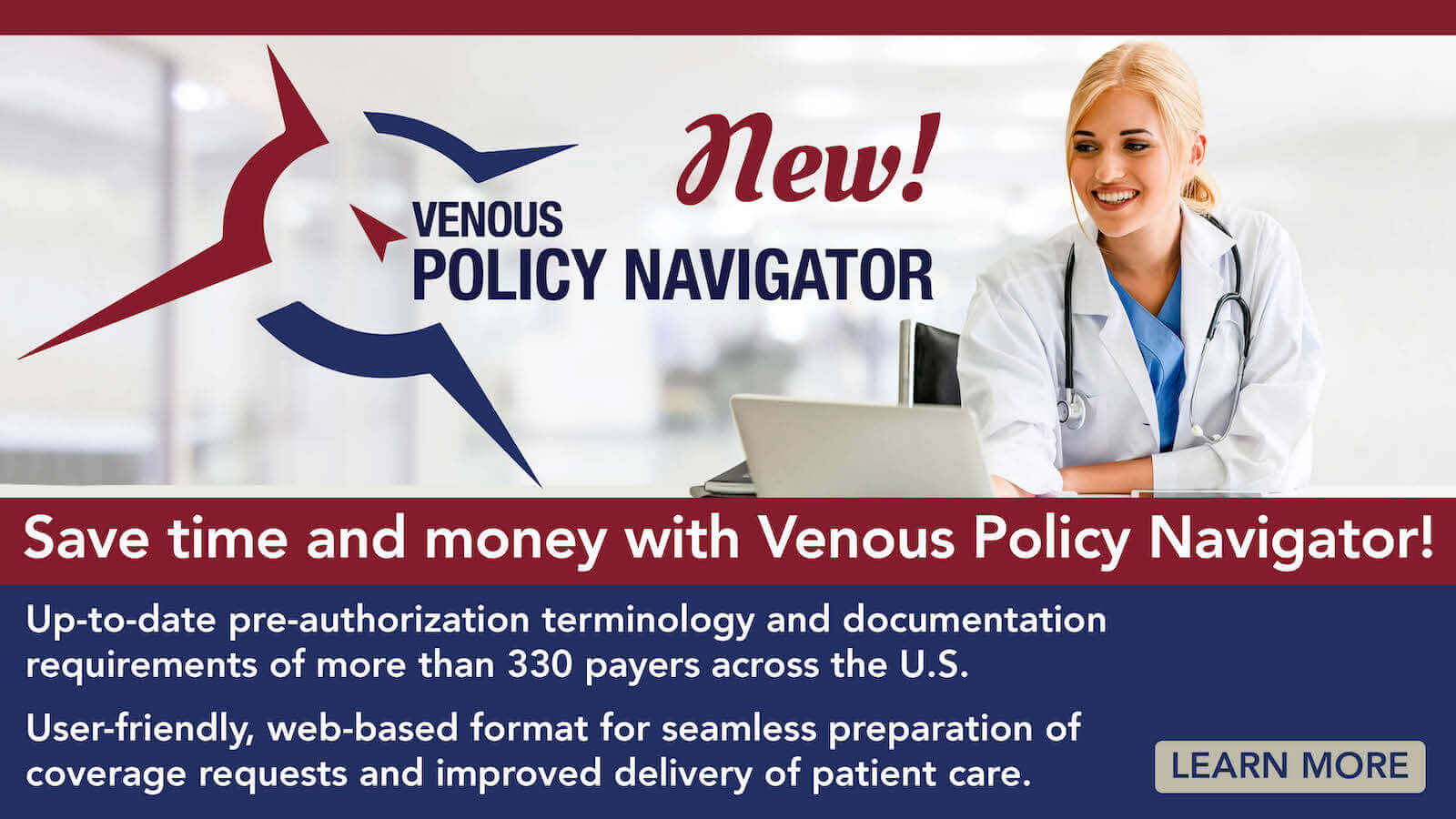
November/December Issue of Vein Specialist
AVF Research Committee Puts Policy Navigator to the Test

Mark Iafrati, MD
Secretary & Administrative Council Chair, AVF Board of Directors
The variation in insurance policy coverage pertaining to the treatment of venous disease in the United States continues to unevenly impact patients and providers. To better understand this insurance landscape, the Research Committee of the American Venous Forum utilized the AVF’s Venous Policy Navigator to compare more than 230 insurance policies active in 2022. Their findings, published in the November issue of the JVS-VL, demonstrate that despite thorough clinical practice guidelines endorsed by the AVF, SVS, and ALVS and many other clinical organizations, payors continue to perpetuate restrictive policies. In this paper the Research Committee examined the question as to whether policies covering multiple states differed from single-state policies. These data reflect that the multistate policies, while far from perfect, have generally moved significantly in the direction of adopting clinical practice guidelines impacting the technologies covered, vein size, reflux time, and compression trials compared to single-state policies. This likely reflects the increased level of importance assigned to writing and revising policies that have a national or regional impact. While we applaud the progress made in updating these multistate policies this report clearly identifies the need for Advocacy groups to work with carriers with single-state vein policies to embrace evidence-based policies and to appropriately weight the recommendations in Clinical Practice Guidelines in making their policy decisions. The AVF’s Venous Policy Navigator has been shown to be a tremendously powerful tool in bringing these disparities to light and provides us a streamlined avenue to track changes moving forward.
AVF Collaborates with AVLS, SVS, SIR, and SVM to Develop New Guidelines for Vein Care

Peter Gloviczki, MD, PhD, FACS
Roberts Emeritus Professor of Surgery and Chair,
Division of Vascular and Endovascular Surgery,
Mayo Clinic, Rochester, MN

Peter F. Lawrence, MD
Professor of Surgery, Emeritus
Chief of Vascular and Endovascular Surgery, Emeritus
Director of Gonda Vascular Center, Emeritus
David Geffen School of Medicine at UCLA
Practice guidelines are part of the triumvirate of quality documents (Reporting Standards, Practice Guidelines, and Appropriate Use Criteria) that help physicians, healthcare workers, and patients achieve better quality in clinical care. They are needed because publications on even common diseases may be distributed throughout many journals, have contradictions in their conclusions, and the quality of the published literature– even in peer-reviewed journalsmay vary greatly. Practice guidelines are intended to aid well-intentioned healthcare providers deliver the best care to their patients.
The latest evidence-based clinical practice guidelines on the management of patients with varicose veins is the result of a unique collaboration among key North American vascular societies who participate in the care of patients with venous disease. These multi-society guidelines were written by 20 experts of the American Venous Forum (AVF), the American Vein and Lymph Society (AVLS), and the Society for Vascular Surgery (SVS). The document was reviewed and endorsed by the Society of Interventional Radiology (SIR) and the Society for Vascular Medicine (SVM).
Part I of the guidelines was published in March of 2023. Part II of the document was recently published in the Journal of Vascular Surgery: Venous and Lymphatic Disorders (JVS-VL). https://www.jvsvenous.org/article/S2213-333X(23)00322-0/fulltext
These guidelines addressed critical clinical questions on varicose veins, using the PICO system (Patient, Intervention, Comparison, and Outcome). Systematic literature reviews allowed assessment of the quality of the literature. The writing group conducted an analysis of the systematic review for each question and provided a grade, based on the strength of the recommendations (1, strong, 2, weak) and the quality of the evidence (A, high, B, moderate, C, low or very low quality) (Table 1).

Table 1.
| N. | GUIDELINE | Grade of recommendation | Quality of Evidence | |
| 11.1.1. | In an average-risk patient who is asymptomatic following thermal ablation of the saphenous vein, we recommend against routine early post-procedural DUS to detect ablation-related thrombus extension (ARTE, formally known as Endovenous Heat Induced Thrombosis, EHIT) or DVT. |
1 (strong) |
B (moderate) |
|
| 11.1.4. | In patients who are symptomatic following thermal or non-thermal ablation, we recommend early DUS to exclude ablation-related thrombus extension (ARTE) or DVT. |
1 (strong) |
A (high) |
|
Part II of these guidelines includes 42 graded recommendations, each based on one or more systematic reviews or meta-analyses of the published literature. For an additional 33 recommendations, a systematic review of clinical trials was not available; these were published as ungraded consensus statements. The document also has 7 best practice statements and 3 implementation remarks.
Key topics addressed in these guidelines include, among others, evaluation with duplex scanning, criteria for ablation of the saphenous veins, compression treatment, drug and nutritional therapy, open surgical treatments, thermal and non-thermal ablation of the incompetent saphenous veins, sclerotherapy and mini-phlebectomy for treatment of varicose tributaries, timing of ablation and treatment of varicose tributaries, and prevention and management of thrombotic complications of venous interventions. The document introduces a new term: ablation related thrombus extension (ARTE) that includes all ablation-related thrombus extension (EHIT, EFIT, EGIT, etc.), independent of the device or technique used for the procedure.
Recommendations are also given on management of perforating veins in varicose vein patients, of superficial thrombophlebitis, and superficial venous aneurysms. The document concludes with recommendations of 20 topics for future research and lists 317 references.

Figure 1: Varicose vein from David Factor (Copyright JVS/JVS-VL).Reprinted with permission.)
References
- Gloviczki P, Lawrence PF, Wasan SM, et al. The 2023 Society for Vascular Surgery, American Venous Forum, and American Vein and Lymphatic Society Clinical Practice Guidelines for the Management of Varicose Veins of the Lower Extremities. Part II. J Vasc Surg Venous Lymphat Disord. 2023 Aug 29:S2213-333X(23)00322-0. doi: 10.1016/j.jvsv.2023.08.011. Epub ahead of print. PMID: 37652254.
Sumner’s Hemodynamic Guide to Venous Diagnosis and Intervention

Jose I. Almeida, MD, FACS
Founder, Miami Vein
Voluntary Professor of Surgery
Division of Vascular and Endovascular Surgery
University of Miami Miller School of Medicine
Miami, FL
Hemodynamics for Surgeons, edited by Strandness and Sumner, was published in 1975 and quickly fell into the ”must have”’ category for an emerging new cadre of vascular surgeons. Today, the original edition has long been out of print, but used copies still sell for thousands of dollars, a sign of the lasting popularity of the book. The new Sumner’s Hemodynamic Guide to Venous Diagnosis and Interventionedited by Jose Almeida, Ghassan Kassab, and Fedor Lurie is modeled to perpetuate the essence and style of the original book.
The primary audience for this book is venous clinicians. But, as we know, the venous space has become very device-centric; there are many stakeholders now, particularly engineers. There is a collaborative nature in work so that we have clinicians and engineers working together. Physicians bring in engineers and help them understand what the problems are, what things work, and more importantly, what things don’t work; for example, what do we look for in a stent? What are the material characteristics that are more suitable for the venous system? How does it interact with the arterial system? What is the long-term follow up? What are the complications? What happens to these stents over time? What about post-thrombotic veins?
Engineers appreciate analytical and mathematical precision. The same laws of physics that apply to a shuttle or a bridge apply to our bodies too. If an engineer must design a bridge or a space shuttle or an automobile, they clearly need to understand the structure or the geometry of the system. To us on the medical side, we call that anatomy and physiology. In our case, we seek to understand the vascular system (the irrigation system, if you will) that delivers blood flow.
BB Lee, MD wrote an extensive review of the book in the Journal of Theoretical and Applied Vascular Research. He states “More precisely, they made such extensive review on every topic of venous hemodynamics, item after item, to leave no stone unturned…(1)
To order either the print or digital book (AVF members receive a 10% discount) on Shopify, go to https://cinemed.myshopify.com/.
Customer questions can be directed to Mary Panagrosso, CineMed, Inc. (800) 253-7657, ext 106.[email protected]
Reference
- Lee BB. Review of Sumner’s Hemodynamic Guide to Venous Diagnosis and Intervention. JTAVR 2023;8:72.
Welcome New Members
| September and October 2023 | |
|---|---|
| Anas Alharbi | United States |
| Julie Caputo | United States |
| Roberto Cerrud-Rodriguez | United States |
| Amanda Chin | United States |
| Mohammed Dairywala | United States |
| Alexis Davis | United States |
| Katelynn Ferranti | United States |
| Samantha Fountain | United States |
| Nisha Gill | United States |
| Lauren Gordon | Canada |
| Robert Griffith | United States |
| Matthieu Josnin | France |
| Muhammad Khan | United States |
| Philip Lopresti | United States |
| Abdullah Malik | United States |
| Amarseen Mikael | United States |
| Bria Miller | United States |
| Aditya Munshi | United States |
| Mohammad Nizamuddin | United States |
| Daniel Para | United States |
| Luke Perry | United States |
| Hugo Pin | Australia |
| Ery Rodriguez | Guatemala |
| Marwah Salih | United Kingdom |
| Kellie Savage | United States |
| Denny Scaria | United States |
| Adeeb Sebai | United States |
| Rahul Sima | India |
| Sundeep Srivastava | United States |
| Rachell Sullivan | United States |
| Satish Tadepalli | United States |
| Kathy Tran | United States |
| Waqas Ullah |



